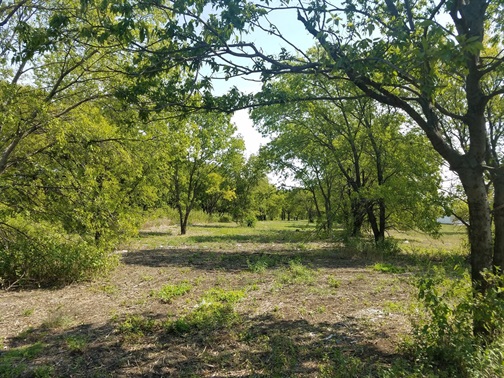The North Fort Worth Area is bounded roughly by downtown Fort Worth to the south, Highway 287 to the west, the City limits to the north, and Loop 820 and Precinct Line Road to the east. Soils in this area consist largely of shallow clay with dense plates of calcareous limestone beneath. Much of north Fort Worth is native prairie, with hackberry, cedar elm, and pioneer/fencerow species such as bois d’arc, honeylocust, and mesquite the predominant tree species. Riparian species, including American and cedar elm, locust, willow, cottonwood, and ash are found along Fossil Creek.
 Post oaks begin to appear more frequently as you approach Keller and Roanoke. Urban development north of Loop 820 in the late 1980’s spurred plantings of red oak and live oak, ornamental pear, green ash, cedar elm, Chinese pistache, crape myrtle, and baldcypress.
Post oaks begin to appear more frequently as you approach Keller and Roanoke. Urban development north of Loop 820 in the late 1980’s spurred plantings of red oak and live oak, ornamental pear, green ash, cedar elm, Chinese pistache, crape myrtle, and baldcypress.
Much of the large blocks of undeveloped land are north of Loop 820. Although tree canopy is relatively sparse in many areas of north Fort Worth, there are several areas with mature trees. Developers are encouraged to preserve existing trees when possible, particularly in rocky soils where regeneration is slower and more difficult.